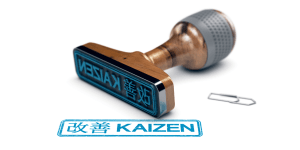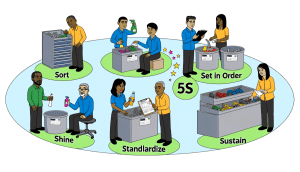Lean methodology is a popular approach in the business world that focuses on maximizing value while minimizing waste. At the core of Lean methodology are the 3 Ms: Mura, Muri, and Muda. These three principles help organizations identify and eliminate inefficiencies in their processes, leading to improved productivity and quality. In this article, we will delve into each of the 3 Ms and discuss how they can be applied to achieve operational excellence.
Understanding Mura: Unevenness in Processes
Mura refers to the unevenness or inconsistency in processes. This can manifest in various forms, such as fluctuating workloads, uneven production flows, or unpredictable customer demands. When there is mura in a process, it can lead to inefficiencies, delays, and unnecessary costs. By identifying and addressing mura, organizations can create a more stable and predictable workflow, resulting in smoother operations and better quality output.
Analyzing Muri: Overburden in Work
Muri, on the other hand, refers to overburden or strain on workers and equipment. This can occur when employees are tasked with more work than they can handle, leading to stress, errors, and decreased productivity. Similarly, machines that are pushed beyond their capacity can break down more frequently, causing disruptions in production. By reducing muri, organizations can ensure that workloads are balanced, employees are not overwhelmed, and equipment operates efficiently.
Identifying Muda: Waste in Operations
Muda is perhaps the most well-known of the 3 Ms and refers to waste in operations. This can include unnecessary motion, inventory, waiting times, overproduction, defects, and unused talent. By identifying and eliminating muda, organizations can streamline their processes, reduce costs, and improve overall efficiency. Lean methodology advocates for continuous improvement and the elimination of all forms of waste to maximize value for customers.
Implementing Lean Principles in Business
To implement Lean principles effectively, organizations need to engage employees at all levels, create a culture of continuous improvement, and use tools such as value stream mapping, 5S, and Kanban. By applying Lean principles to their operations, businesses can optimize their processes, reduce lead times, and enhance customer satisfaction. It is essential to embed Lean thinking into the organizational culture and make it a part of daily operations to sustain long-term success.
Achieving Efficiency through Mura, Muri, Muda
By addressing mura, muri, and muda, organizations can achieve significant efficiency gains and competitive advantages. Smooth processes with minimal fluctuations, balanced workloads, and the elimination of waste contribute to improved productivity, quality, and customer satisfaction. Lean methodology’s 3 Ms provide a framework for organizations to identify and eliminate inefficiencies, leading to streamlined operations and better business outcomes. It is crucial for businesses to embrace Lean principles and continuously strive for operational excellence to thrive in today’s competitive landscape.
In conclusion, Lean methodology’s 3 Ms – Mura, Muri, and Muda – offer valuable insights into how organizations can improve their processes and drive efficiency. By understanding and addressing unevenness, overburden, and waste in operations, businesses can optimize their workflows, reduce costs, and enhance customer value. Implementing Lean principles requires commitment, dedication, and a willingness to embrace change. However, the rewards in terms of improved performance, quality, and competitiveness make the journey towards Lean excellence worthwhile for any organization.









